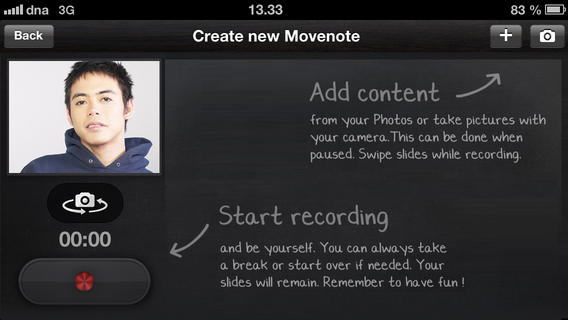As a former Spanish language teacher, my experience of integrating technology into my Spanish teaching has not yet included mobile technologies. Six years ago, I left a computer language lab with rows of computers in cubicles. While I enjoyed having computers to open the world of cultures and digital discourse to my students, I had not looked back until now. The past few years I’ve been teaching students how to use computers for learning. I thought it was about time that I see how new technologies were now being used in foreign language classrooms.
I had the privilege of attending a workshop put on by the Massachusetts Foreign Language Association (MaFLA) where Renée Dacey and Daniela De Sousa of Burlington High School put together a fabulous presentation called iPads in the Foreign Language Classroom. Many already know that Burlington is a pioneer in the one-to-one initiative providing their students with iPads to use everyday. Over the past two years they have grappled with many of the benefits and pitfalls of mobile learning.
As I recall the language lab of my past, and dream of what could be, this experience has prompted me to make comparisons to what a non-language lab could be. I aim to find out how much savings can come from not having to purchase a full-blown language lab, maintaining a goal that these mobile solutions compared to the old wooden cubicles would have to demonstrate that they can enhance students’ reading, writing, speaking and listening skills in the foreign language classroom.
My following analysis is based on common essentials of a foreign language lab.
Question and Answer, Multiple Choice, Fill-in-the-blanks and so on
Renée and Daniela highlighted one of my clear favorites, Google Apps. Creating forms is a great way to gather student work. In teaching a foreign language there is always a place for the “fill-in-the-blank” websheets. It is a staple in language learning, and a must for mastery of grammar and syntax. Google forms is quick and easy. Over the past few years, I’ve discovered several grading scripts to make the experience even better, such as Flubaroo which automates the websheet/quiz experience complete with grading.
There are numerous web-based quiz sites available, too. I’ve used Quia and Quizstar. Your online textbook may have plenty to choose from. Polling sites, like Poll Everywhere, are great tools for formative assessment.
Hands on Practice
 Teachers across disciplines have heard of Showme and Educreations, but the Burlington duo introduced me to one I was not yet familiar with.Notability, it uses a very user-friendly interface to interact with PDF documents, images and more. Students can open a PDF document and begin annotation. They highlight key parts of speech, draw on images of works of art to illustrate significant aspects of history and culture. Renée and Daniela demonstrated writing in words and highlighting vocabulary to song lyrics while listening to the music play. Students play with realia using sphere or Arounder or Sphere 360 to view museum tours. Students in their classes read and watch news in the target language on the BBC World app. There is no better way to learn than to have the information at your fingertips to interact with in a holistic way.
Teachers across disciplines have heard of Showme and Educreations, but the Burlington duo introduced me to one I was not yet familiar with.Notability, it uses a very user-friendly interface to interact with PDF documents, images and more. Students can open a PDF document and begin annotation. They highlight key parts of speech, draw on images of works of art to illustrate significant aspects of history and culture. Renée and Daniela demonstrated writing in words and highlighting vocabulary to song lyrics while listening to the music play. Students play with realia using sphere or Arounder or Sphere 360 to view museum tours. Students in their classes read and watch news in the target language on the BBC World app. There is no better way to learn than to have the information at your fingertips to interact with in a holistic way.
Photo by mikecogh
Interactive, multimedia exercises
Mobile devices, tablets, laptops, Chromebooks or even iPods and cell phones have interactive creative potential in a foreign language classroom. As the standalone computer has done in my language classroom, these mobile devices come with a plethora of tools for interaction and creativity. These tools can also be used for teacher-created interactive exercises.
My favorite multimedia project for years was having my students create animations using PowerPoint. Students created very unorthodox slides with animated characters, callout bubbles and voice-over recordings. Finally with the 2010 version, those projects can now be converted into video ready for YouTube.
Needs to be intuitive and easy to use
 The iPad has many neat tools similar for creating with multimedia. Some include Puppet Pals, Story Kit, Movenote, Video Editor Free, and many other comic-strip creators perfect for illustrating language usage. Students can listen and record their own voices using many already familiar apps. There are hundreds on any tablet platform and many more on the web that can do whatever creative project a student drives him/herself to do. Plus, many students come already having used said devices.
The iPad has many neat tools similar for creating with multimedia. Some include Puppet Pals, Story Kit, Movenote, Video Editor Free, and many other comic-strip creators perfect for illustrating language usage. Students can listen and record their own voices using many already familiar apps. There are hundreds on any tablet platform and many more on the web that can do whatever creative project a student drives him/herself to do. Plus, many students come already having used said devices.
Recording exercises
One of the main purposes for purchasing a language lab is having the ability to do open recording, simultaneous recording, active-comparative recording, live speaking and listening exercises. Apps like Garageband, SoundCloud, Evernote, Google Hangouts, YouTube has a record feature now. Audio recordings are better with video as the instructor can see how comfortable the student is with the language. This helps the teacher know if he/she is reading from a script or if any editing had been one.
 Apps like Showme make recorded speaking and illustration more powerful . Imagine walking through a family photo album introducing and describing each person. Draw over a photo of a bedroom describing contents in the room. Soundboards can be created a number of ways to deliver soundbytes instantly to student for aural exercise.
Apps like Showme make recorded speaking and illustration more powerful . Imagine walking through a family photo album introducing and describing each person. Draw over a photo of a bedroom describing contents in the room. Soundboards can be created a number of ways to deliver soundbytes instantly to student for aural exercise.
Movenote allows the student or teacher to show video of him/herself while illustrating a concept, place, or story.
Motivation
There is no question that a shiny new device raises motivation, however, as Renée and Daniela cited, at their one-to-one environment, kids can be overwhelmed by excitement one day, and then over-apped another. They quoted students as saying “death by ShowMe” (or any app inserted). Too much of one thing can be just as bad. The important takeaway is that even a cubicle language lab will likely also be highly motivational at first.
Relia is important in language learning. Using online radio, Skype calling or a number of messaging or chat tools, will engage the student to become a global citizen.
Portable, Internet-based
My years of having my classes scheduled in the language lab by default has actually had a negative effect on my teaching. When other teachers turned down their days of using the lab so I could in turn use a standard classroom has led to claustrophobic experiences. Many times I longed for the open classroom floor where students sit in a circle and we just talk, drill and practice while throwing a ball around the room. Face-to-face interaction was indeed compromised. A portable solution enables the teacher to “turn it off” and it doesn’t seal up an entire classroom.
Oh, and cost-effective, too (cheap)
Researching for a potential language lab in my new role at my new school, I am discovering pitfalls I had experienced with my old lab. Many teachers of other disciplines managed to use the lab. Many classes, foreign language and non foreign language, pulled and tugged on the headsets, toyed with the hardware and eventually rendered much of it nonfunctional over time. The need for training, pricey repairs, software upgrades, incompatibilities with networks and other software made the overall lab experience unfavorable.
 The costs involved with a full-fledged language lab are enormous, not to mention the maintanance fees. The proprietary systems make it impossible for standard IT to handle the repairs. You need to purchase computers as part of the process. There is some value in isolating sound with cubicles.
The costs involved with a full-fledged language lab are enormous, not to mention the maintanance fees. The proprietary systems make it impossible for standard IT to handle the repairs. You need to purchase computers as part of the process. There is some value in isolating sound with cubicles.
Photo by E. Castro
Mobile devices are cheaper by the day. In fact, the iPad2 is currently a fantastic buy for anything mobile. Look out for the less expensiveandroid or Microsoft devices. There are many web creations and interactions, why not Chromebooks? Starting a BYOD? There, you have little or no costs. Sure you may want to purchase some apps, but most are free.
The difference for me is that a real-world tool can be learned through the experience of using a mobile device. As a computer teacher, I find value in real world tools and find little patience for proprietary educational tools.
Renée Dacey & Daniela De Sousa are language teachers at Burlington High School in Massachusetts. Burlington has been awarded an Apple Distinguished School award for their one-to-one initiative.
Kevin Murphy has taught 11 years a s a Spanish teacher — 10 of those while using a computer- and hardware-based language lab. He is currently teaching my 6th year at Frontier Regional School as a technology teacher and integration specialist. Find the original post at http://bloginthenewworld.wordpress.com/2013/11/05/a-computerforeign-language-teachers-quest-for-a-mobile-language-lab-solution/
 Print this post
Print this post



